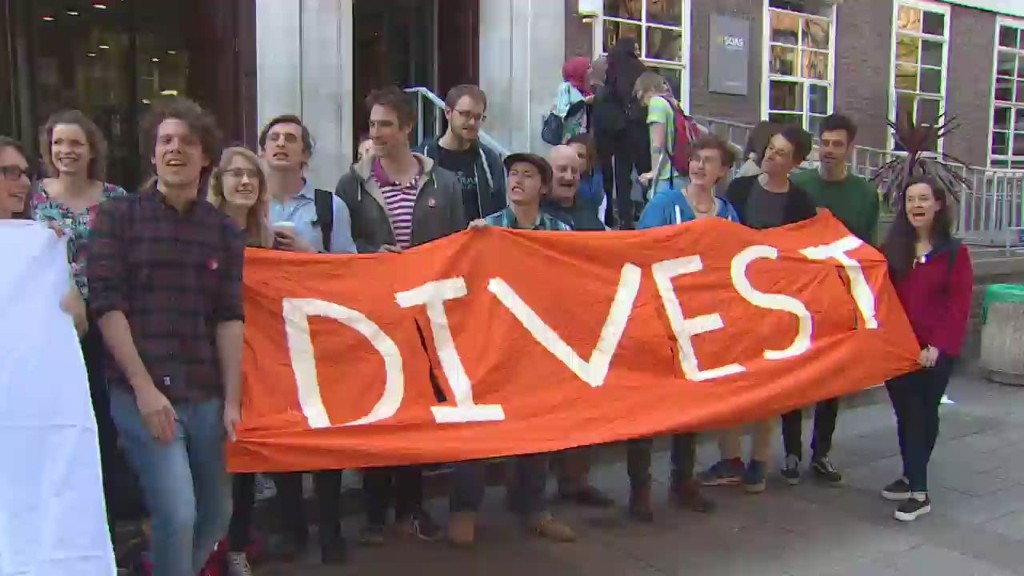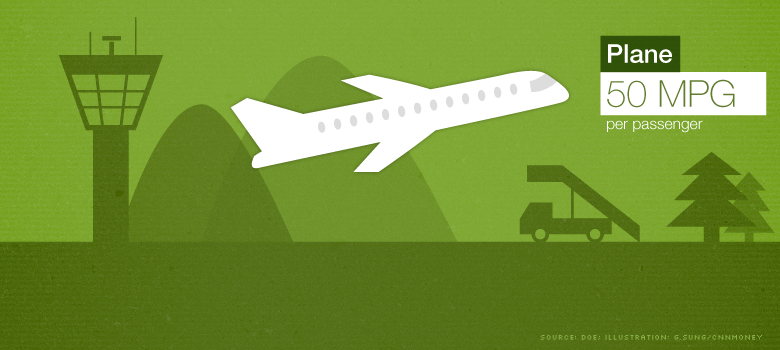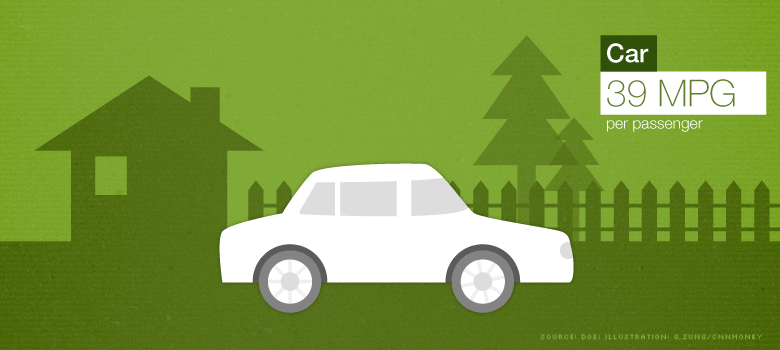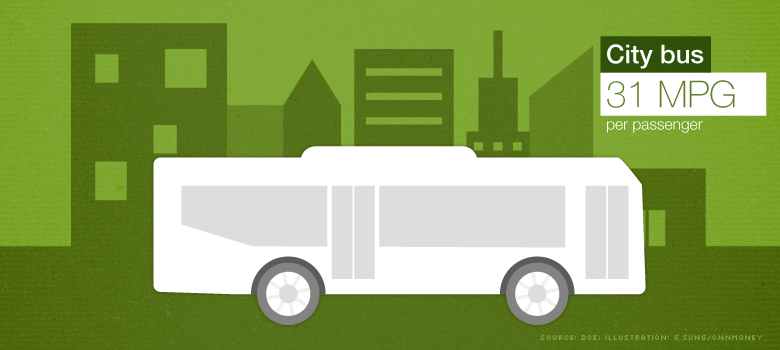
Which mode of transportation is best for the earth? Actually, the bus -- specifically, city-to-city buses like the Greyhound.
The bus itself gets a paltry 6 miles per gallon. The reason buses are environmentally sound is that they are usually full of people, giving it the highest miles per gallon per passenger, at 208.
A coach bus typically carries nearly 38 passengers -- making it over 70% full, according to the American Bus Association.
This is partly why bus travel is so cheap, and it has helped fuel a boom in express city-to-city bus service from the likes of Megabus and Bolt. These new bus companies have doubled their trips since 2010 and now serve nearly every major U.S. city.

Trains are the next best choice, particularly the Amtrak. Though service is notoriously slow, the Amtrak gets 56 mpg per passenger. City trains and commuter rail are pretty good too. A city train (think subway or light rail) gets 52 mpg per passenger (or the equivalent, if it's electric), while a commuter train -- usually used to connect the suburbs to a city -- gets about 44 mpg per passenger.

Flying is better than driving, a reversal from just a decade ago. Planes get 50 mpg per passenger. Improvements in engine technology, aerodynamics, and putting more people on each flight has made taking a plane a much greener choice.

Driving is pretty bad, and it's largely because we drive alone. The average car contains just 1.5 passengers, and the mpg per passenger is 39. This equation changes, of course, if you've got four people in a 50 mpg hybrid.

And the absolute worst for the environment: City buses, which are apparently driving around nearly empty. The typical city bus is less than 25% full at any given time, according to the Energy Department. That's why they have an mpg per passenger of just 31.


